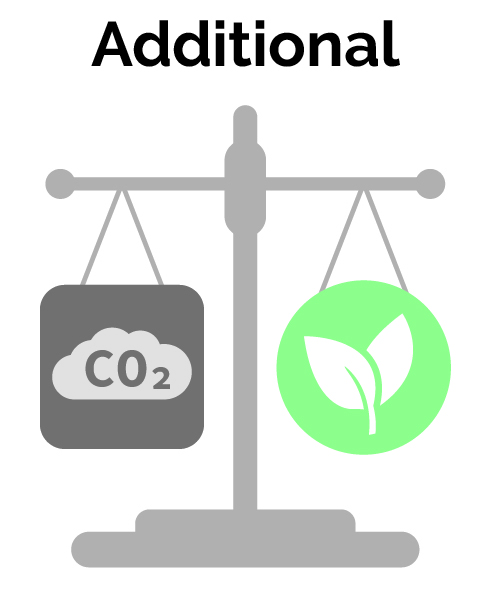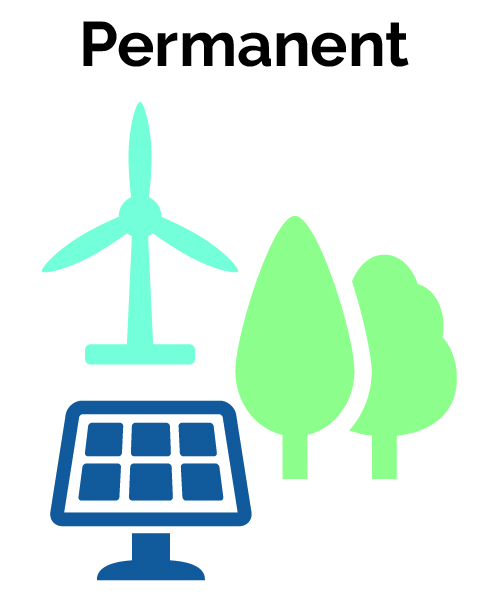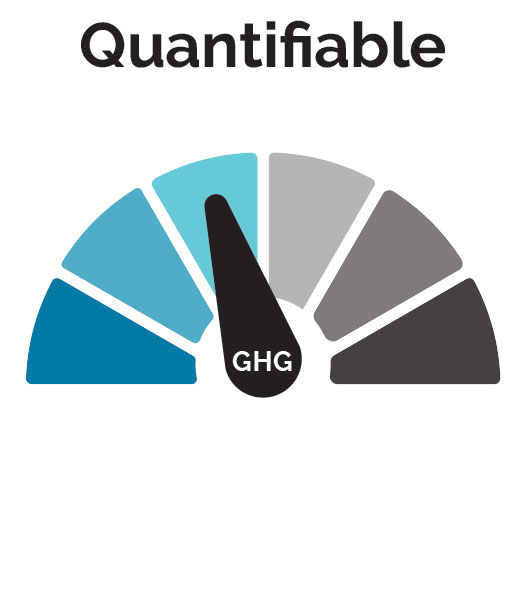About this series: ESA produces “The Road to Carbon Neutrality” to highlight key issues, policies, and programs that are essential to achieving a decarbonized economy. By utilizing the unique qualifications of ESA’s scientists and planners, we bring strategic technical consulting services to our clients through a holistic approach to successfully reaching carbon neutrality goals.
The road to carbon neutrality is a complex process that requires not only a strong commitment, but dedicated analysis, planning, and action. Our previous article in this series, “Deciphering Corporate Carbon Neutral Pledges,” gives an overview of these commitments. Today, we will dive deeper into the “action” step—in particular, the use of carbon offsets to achieve a carbon neutral or “net zero carbon” target.
A Necessary Tool
Publicly declaring a carbon neutral commitment and setting a target should be applauded, but it’s also important for a company to be clear and transparent as to how it is reducing its emissions. It is imperative that companies back up their carbon neutral claims with measurable efforts to decarbonize their operations and supply chains. However, since current technologies and economic conditions prevent businesses from operating with zero emissions, the use of carbon offsets is necessary to bridge this gap to carbon neutrality.
Carbon offsetting refers to a reduction of greenhouse gas (GHG) emissions—or an increase in carbon storage (e.g., through land restoration or the planting of trees)—that is used to compensate for emissions that occur elsewhere. An organization buys carbon offsets to decrease its carbon footprint, but those reductions are associated with a project that would not have occurred without that investment—a concept known as “additionality.” For credibility purposes, offsets should be third-party verified and purchased from a reputable seller or registry to ensure that they meet the criteria for being “real, additional, permanent, quantifiable, and verified.”
There are two types of markets for carbon offsets: compliance and voluntary.

Compliance markets are those created by governments (e.g., California’s Cap and Trade System) to help regulated entities meet their emissions reduction obligations, whereas voluntary markets derive from commitments made by the private sector and non-governmental organizations to reduce emissions. Compliance markets are underpinned by regulation—they allow governments, private companies, and other entities to purchase carbon offsets in order to comply with caps on the amount of GHG emissions they are allowed to emit. The voluntary market allows private investors, governments, non-governmental organizations, and businesses to voluntarily purchase carbon offsets to offset their GHG emissions.
This article focuses on offsets used in the voluntary market, such as those that many corporations use to support their carbon neutral or “net zero” claims. Note that while carbon offsets are currently regarded as necessary to achieve carbon neutrality, corporations should be cognizant of overreliance on the tool, opening them up to potentially justifiable criticism from stakeholders that the company is not doing all it can to reduce its emissions through its own policies and management systems. In general, strategies for achieving carbon neutrality should emphasize on-site operational emissions reductions through energy efficiency and zero carbon technologies before turning to offsets to “bridge the gap.”
Ensuring Credibility of Offsets

Carbon emissions reductions or enhancements must result from a demonstrable action or set of actions, and are quantified using appropriate, accurate, and conservative methodologies that account for all GHG emissions sources, GHG sinks, and GHG reservoirs within the offset project boundary and account for uncertainty and the potential for activity-shifting leakage and market-shifting leakage.

Carbon offsets must represent actual emissions reductions compared to what would have otherwise happened under “business as usual”—in other words, the reductions must be additional to any GHG reduction or removals otherwise required by law, regulation, or legally binding mandate, and must exceed any GHG reductions or removals that would have otherwise occurred because of normal market conditions.

GHG reductions and GHG removal enhancements must not be reversible, or, in cases where they may be reversible (e.g., reforestation projects), there must be mechanisms in place to replace any reversed GHG emissions reductions and to ensure that all credited GHG reductions will endure for at least 100 years.

The existence of the carbon offset as real, additional, and permanent must be well documented and transparent such that it lends itself to an objective review by an accredited verification body.

The emissions reductions must be accurately measured, with the GHG reductions or GHG removal enhancements being calculated relative to a project baseline in a reliable and replicable manner for all GHG emissions sources, GHG sinks, or GHG reservoirs included within the offset project boundary, while accounting for uncertainty and activity-shifting leakage and market-shifting leakage.
Markets and Pricing
Over the past few years, carbon finance has become a hot topic, with many new sectors of the economy joining the voluntary carbon market. Ecosystem Marketplace’s latest annual report credits this expansion to the rapid acceleration of “net zero” carbon commitments from corporations, noting that voluntary carbon markets posted a near 60 percent increase in value from 2021 compared to 2020.[1] To this end, there are now several different standards used by suppliers of offsets to certify that offset projects produce credits that are real and verifiable. The most reputable standards in the over-the-counter voluntary market include:
Approved protocols include creating offsets from projects that capture, sequester, store, and otherwise offset carbon related to forestry, livestock management, ozone depleting substance reduction, rice cultivation, direct air capture, and other projects. A “spot check” conducted by ESA in April 2022 of over-the-counter reputable offset retailers reveals current prices for high-quality offsets ranging from approximately $15 to $25 per metric ton of carbon dioxide equivalent (MTCO2e).[2]
Meeting Climate Goals
How do offsets aid us globally in achieving goals that will help solve the climate crisis? According to the World Bank’s latest annual report, carbon needs to be priced at between $50 per MTCO2e and $100 per MTCO2e by the year 2030 to achieve the goals of the Paris Agreement.[3] However, even supported by these prices, carbon offset projects alone cannot solve the climate crisis, and stakeholders know this. Globally, we must reduce emissions by 80 to 90 percent by 2050 to keep the temperature increase manageable. No amount of carbon offsets can enable attainment of the Paris Agreement targets if coal power stations continue to be built, petroleum-fueled cars continue to be bought, and the growing global population continues to consume as it does today.

Thus, both compliance markets like the California Air Resources Board (CARB) and voluntary standards like the Corporate Net-Zero Standard from the Science-Based Targets initiative (SBTi) are tackling the issue head on by greatly restricting the use of offsets in supporting longer-term net zero claims.
Stay tuned as we explore approaches to utilizing carbon offsets, including for use in California Environmental Quality Act (CEQA) settings, in upcoming articles in the series.
For more information about ESA’s broad range of services to help you reach carbon neutrality, reach out to Jeff Caton and Chris Easter.
[1] Ecosystem Marketplace, 2021. State of the Voluntary Carbon Markets 2021, Installment 1. Available at: https://www.forest-trends.org/publications/state-of-the-voluntary-carbon-markets-2021/
[2] Offset prices offered by four retailers were reviewed on April 11, 2022: atmosfair (https://www.atmosfair.de/en); CoolEffect: https://www.cooleffect.org); and NativeEnergy (https://native.eco); TerraPass (https://www.terrapass.com).”
[3] World Bank Group, 2019, State and Trends of Carbon Pricing 2019. Available at: http://documents.worldbank.org/curated/en/191801559846379845/pdf/State-and-Trends-of-Carbon-Pricing-2019.pdf


